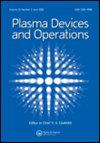New ellipsoid cavity model for high-intensity laser–plasma interaction
引用次数: 15
Abstract
In this work we present an ellipsoid cavity regime for the production of a bunch of quasi-monoenergetic electrons. The electron output beam is more effective than the periodic plasma wave method or the plasma-channel-guided method. A hyperbola, parabola or ellipsoid path is described for the electron trajectory motion in this model. A dense bunch of relativistic electrons with a quasi-monoenergetic spectrum is self-generated here. The obtained results show a smaller width for the electron energy spectrum in comparison with the previous results. We found that there are optimum conditions to form the ellipsoid cavity. Laser beam properties (such as the spot size, power and pulse duration) and plasma features can control the ellipsoid cavity formation. The optimum conditions for effective electron beam production can be determined from these results.高强度激光-等离子体相互作用的新椭球腔模型
在这项工作中,我们提出了一个产生一堆准单能电子的椭球腔体系。电子输出束比周期等离子体波法和等离子体通道引导法更有效。在该模型中,电子的运动轨迹描述为双曲线、抛物线或椭球轨迹。密集的一束具有准单能谱的相对论性电子在这里自生。所得结果表明,与先前的结果相比,电子能谱的宽度更小。我们发现存在形成椭球腔的最佳条件。激光束特性(如光斑大小、功率和脉冲持续时间)和等离子体特性可以控制椭球腔的形成。根据这些结果可以确定产生有效电子束的最佳条件。
本文章由计算机程序翻译,如有差异,请以英文原文为准。
求助全文
约1分钟内获得全文
求助全文

 求助内容:
求助内容: 应助结果提醒方式:
应助结果提醒方式:


